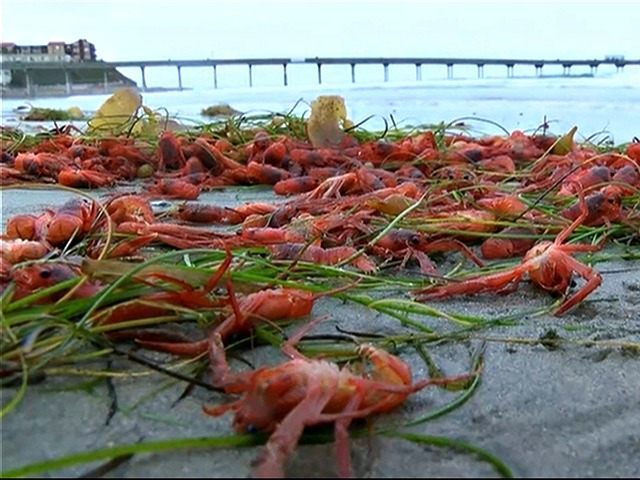With Tuna Crabs overrunning San Diego beaches in the first signs that an El Niño weather condition is bearing down on the Western United States, the Obama Administration raised this year’s federal emergency drought funding for the seven Western states to $300 million.
After limited aid during two years of inaction, the Obama Administration is going all-in for drought relief, just as El Niño’s torrential rains will soon arrive.
President Obama held an hour video conference with the Governors of Arizona, California, Colorado, Montana, Oregon, Wyoming, and the Lieutenant Governor of Utah yesterday afternoon to announce his commitment to respond to the 35 percent of the West that is suffering severe drought.
Assistant Secretary of Labor for Employment and Training Portia Wu told reporters late in the afternoon that the Obama Administration has pledged another $110 million of federal resources from the U.S. Agriculture Department, Environmental Protection Agency, Labor Department, Interior Department, and Federal Emergency Management Agency to provide emergency assistance to seven states hit by the drought.
Governor Jerry Brown (D) thanked the President for his concern and commented that the latest UC Davis study predicted drought-related losses in agricultural communities will include over half a million acres taken out of production and cost 18,000 jobs.
The Feds pledged that California will receive $10 million in water for rural communities, $30 million to farmers suffering crop losses, $10 million in brush clearing to reduce wildfires, $6.5 million water management improvement grants and $7 million to help local utilities and households.
With the latest UC Davis study predicting drought-related losses in agricultural communities will cost 18,000 jobs, the Labor Department also promised $18 million for a jobs program to help about 1,000 rural Californians get temporary jobs doing drought-related work to help make their communities more drought-resistant.
Brown told the LA Times, “This aid will provide new opportunities for farmworkers and rural communities most impacted by the drought and make the state more water-efficient and drought resilient.”
In an interesting twist, the Obama Administration is supporting legislation sponsored by Congressional Republicans to speed up timber harvests and the removal of underbrush. The U.S. Forest Service warned that the ultra-dry conditions could result in catastrophic wildfires across the Western United States that could cost $200 million extra for firefighting.
But the tens of thousands of bright red Tuna crabs washing ashore across beaches from Tijuana, Mexico to La Jolla, California is usually a pre-cursor that the massive warm-water “blob” called El Niño that formed along the Pacific Ocean Equator is rapidly pushing up on the U.S. West Coast. The thumb-size crustaceans that look like tiny lobsters as they spread their pinchers feed on plankton blooms in the warm waters off lower Baja. But as the warm waters are pushed north by an El Niño, the Tuna crabs follow their food supply.
Breitbart News warned on April 11 that a Strong El Niño Could Turn Drought into Mass Flooding. Since 1950, four of the worst flood years in California history have been due to El Niño conditions, as a surge in subtropical moisture tends to continuously dump torrential amounts of rain over large portion of California for five to seven days.
The last very strong El Niño hit brought tremendous amounts of rain and snow to California, beginning in the fall of 1996. From December 26 through January 3, there was over 20 inches of rain in some locations. Hundreds of thousands of people were forced to evacuate, and the state suffered about $1.8 billion in damages.
The next winter brought another very strong El Niño impact that included four weeks in February of nearly continuous storm flooding, mudslides, and agriculture disruptions. California’s rainfall that month totaled 21.74 inches, breaking the all-time-record of 17.33 inches that had stood since 1867. For the year, California suffered 17 storm-related deaths and $550 million in damages. A record 35 California counties were declared federal disaster areas during the year.

COMMENTS
Please let us know if you're having issues with commenting.